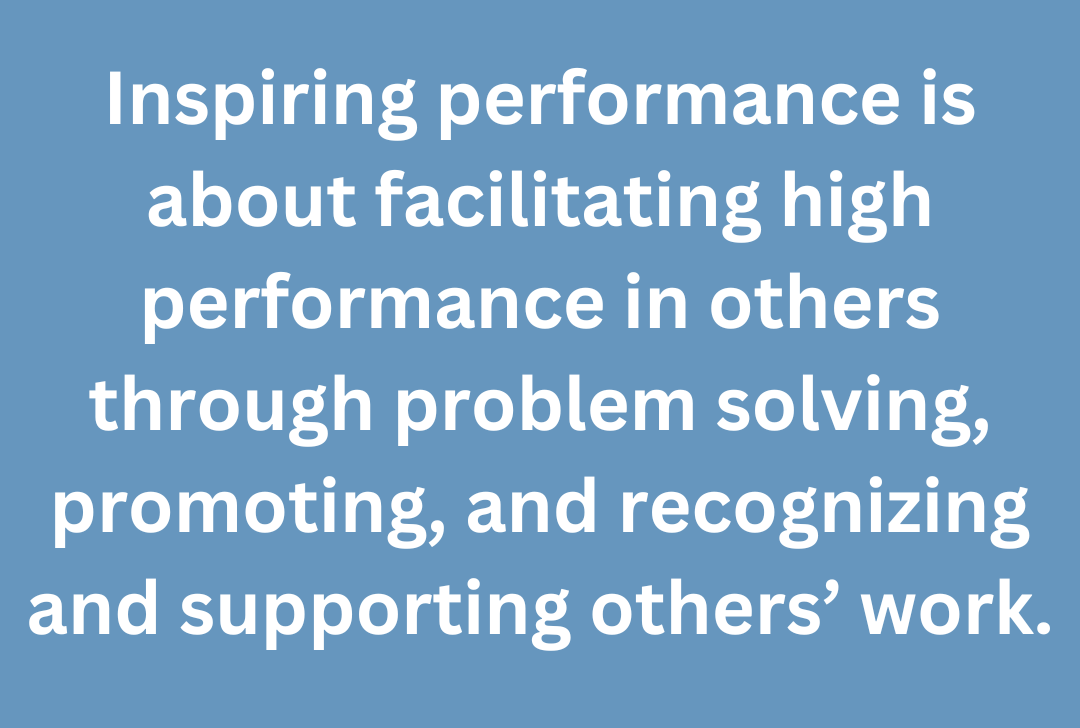Monty got himself onto the executive leadership team the old-fashioned way: through years of hard work, self-development, climbing the ladder, and building positive relationships with the right people. Although Monty always felt good about his public speaking skills, he realized, for some reason, that he wasn’t connecting with his audiences like he wanted to. He could inform people very well, but when it came to inspiring them to reach the next level, something was lacking in his approach and messaging. Fortunately, Monty was able to engage a professional leadership coach who was well versed in public speaking and emotional intelligence training for business leaders. Monty learned how he could evolve into the inspirational leader he always wanted to be. After much practice and work, Monty became the featured speaker at almost every company event; the spark plug igniting the fire under everyone in attendance. Due in large part to his inspirational leadership style combined with his work ethic and experience, Monty is being fast-tracked by the Board of Directors to be the next CEO.
As Monty realizes and Raj has yet to see, becoming a truly effective leader means becoming an inspirational leader; someone who can lead by example but can also lead through style, a person that others look up to for direction, encouragement, and energy.
Inspiring performance is about facilitating high performance in others through problem solving, promoting, and recognizing and supporting others’ work. It’s an important, although somewhat elusive, component of emotional intelligence that is perhaps easier to feel than describe. Nonetheless, there are concrete actions that a leader can take to up their inspiration index, and reap some tangible benefits from a turned-on and tuned-in workforce.
Leadership Qualities to Motivate and Inspire your Team
As we’ve done in other blog posts, here are two key elements of the inspiring performance component of emotional intelligence:
- Providing constructive feedback on behavior and performance
- Recognizing others’ hard work and achievements
Many leaders are quick to criticize and complain when things don’t go well, yet fewer are as ready to praise good performance or offer criticism designed to build up an employee’s self-esteem. A leader who wants to inspire can do so by emphasizing the good points while also pointing out areas for improvement. As an example, which of these comments from your boss would you find more “inspirational?”
 “This entire article you wrote is inadequate. You’d better start over.”
“This entire article you wrote is inadequate. You’d better start over.”
“The structure and messaging are right on, but we need to back up the statements, so please do some more research and add in the numbers. You’re building a strong case. We just have to drive home the big points with more data. Good work so far.”
Of course you chose the second comment.
Everyone likes (and needs) to be valued and appreciated, and as an inspirational leader, you’re always happy to take the time to do so when such appreciation is merited. While emotionally intelligent leaders always put their team first ahead of any individual, they know that a good team is composed of hard-working individuals who give their maximum effort and then some. Many kinds of formal or even informal recognition will go a long way towards inspiring your team to keep winning. It could take the form of awards, special mentions at meetings, a post on LinkedIn, a gift card, or even lunch with the boss. You can choose the format, but just make sure you acknowledge and honor the achievements of your team’s members.
An Inspiration How-to Checklist
Remember, as a leader, it’s your job to inspire and motivate your team to work to the very best of their abilities. Here are seven leadership qualities that can help you to inspire and motivate them:
- Provide a Vision and Purpose
Create an inspiring vision of the future that also gives your team a purpose – something to look forward to, and something to work towards. Make this vision achievable and realistic and roll up your own sleeves to work with the team towards reaching it. Use personal stories and anecdotes from a shared history to explain your updated vision and inspire your team members.
- Set Clear Goals
Set clear goals for completing a project so your team knows what’s expected of them. Setting these goals after a period of having been open to input and feedback about various ideas will motivate the team to work harder, which will boost productivity levels as well. Make sure your team is fully committed to the goals and deadlines you’ve set. This will enable immediate and purposeful action.
- Lead by Example
It’s almost a cliché but it’s totally true. If your team recognizes that you value the time and effort they put into their work, and you demonstrate the same actions and effort you expect from them, it will inspire them to do the same.
Recognize, and even reward, the people who work well together with others. This will stress the importance of and the connection between teamwork and achieving business goals. Your employees will feel more engaged and part of a larger community, which should support retention.
- Be Optimistic and Positive
Projecting a positive attitude and an optimistic outlook, even when times are tough, can inspire your team members to adopt the same attitude and outlook and continue to work hard. Optimism can breed perseverance, which is key to reaching ambitious goals. Remaining positive even when setbacks come, which usually do, will also show the team that innovation and risk are encouraged since they often lead to errors and stumbles on the way to great reward.
- Give Praise and Rewards
We discussed the value of this approach earlier. Don’t be stingy with specific praise and merit-based rewards. It lets people know you’re watching, you care and you’re never too busy to recognize great efforts.
- Communicate with Your Team
Be accessible and approachable so your team members can ask you questions about a project, get your opinion, offer ideas, and give feedback. Being available for your team plays a key role in motivating them, as it shows you value their work and their feedback.
By developing your inspirational leadership skills, you’ll see your team’s performance, productivity, and morale improve significantly. In turn, this will lead you and your company towards greater success. Executive presence – it’s something that successful leaders clearly possess, but what is it, exactly? And how can you cultivate it in your own career? Read our article on The Authoritative Guide to Executive Presence, or download our free eBook on the same topic. You can also download our guide on “11 Ways to Make Your Company a ‘Best Place to Work'”.
If you want to do more than imagine how inspirational leadership can positively impact your leadership abilities, then consider working with us 1on1 or request a class for your team.
To further improve your skills as a business leader, watch our video on cultivating awareness of others as one:
Photo copyright: Featured photo is from ©RDNE Stock project via Pexels. Secondary photo is from ©Mizuno K via Pexels.





















